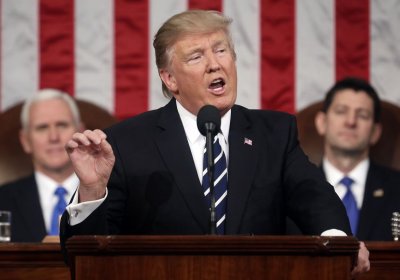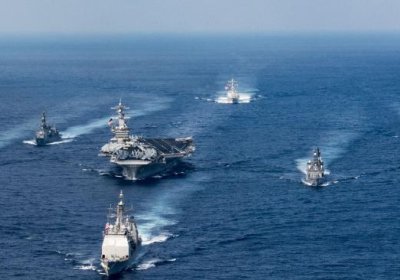North Korean leader Kim Jong Un’s decision to send troops to fight in Russia’s war on Ukraine shocked many in South Korea and internationally. Won Youngsu looks behind this decision.
North Korea
Anti-war protesters formed a human chain around the perimeter of the United States military base in Pyeongtaek, South Korea, on July 27, the 70th anniversary of the Korean War armistice, reports Peter Boyle.
False charges of have been dropped in a political trial against a Korean-Australian citizen, reports Jim McIlroy & Michael Hatrick
Democratic Party politicians and media outlets that reflect their positions have attacked President Donald Trump on certain issues with arguments to the right of him.
One example is United States policy on North Korea. Trump has been taken to task for meeting with Kim Jong-un and initiating discussions with North Korea over its possession of nuclear weapons and missiles to deliver them.
The charge is that even meeting with Kim was wrong because it allegedly legitimises and “prettifies” him.
The intra-Korea summit on April 27 may well be recorded as historic, writes Youngsu Won from Seoul, but questions remain about how stable any peace that emerges will be.
The Panmunjeom Declaration signed by Kim Jong-un and Moon Jae-in clearly signifies Korea’s transition to peaceful coexistence. This development is welcomed by all except for anti-communist hysterical lunatics, nationally and internationally.
This winter has been extremely cold in South Korea, with temperatures regularly reaching well below -10°C — perhaps another sign of climate change.
In a move that “smacks of something you see in a totalitarian country,” according to historian Douglas Brinkley, United States President Donald Trump is reportedly pushing for a huge display of his country’s military prowess.
Donald Trump devoted a large section of the end of his State of the Union address on Tuesday night to North Korea.
Anyone who was paying attention during George W Bush’s State of the Union addresses in 2002 and 2003 would have found Trump’s statements frighteningly familiar: Trump used exactly the same justifications for war with North Korea as Bush had for war with Iraq when standing at the same podium.
War drums are beating louder in Asia. North Korea launched another ballistic missile on November 29. In response, the Japanese government requested an emergency meeting of the United Nations Security Council and South Korea conducted a "precision-strike" drill, firing three missiles into the sea off the east coast that was designed to emulate a strike on the North's launch site.
Will a verbal war between a senile dotard and a little rocket man result in an actual war? Probably not, but at the moment, the risk is unprecedented.
The reason it remains unlikely is simply because the consequences of any actions are so catastrophic. Right now, this is the only deterrent to war.
It is an understatement to say that relations between the US and North Korea are very tense.
The US government continues to threaten to further tighten economic sanctions on North Korea, and launch a military attack to destroy the country’s missiles and nuclear weapons infrastructure. For its part, the North says it will respond to any attack with its own strikes against US bases in the region and even the US itself.
Over the past three months, the world has watched the escalating tensions between North Korea and the United States with growing alarm. North Korea has continued to develop its nuclear weapons program since first testing an intercontinental ballistic missile (ICBM) on July 4.
It is unlikely either side is planning to start a nuclear war, but the situation could escalate out of control and lead to a conflict involving nuclear weapons. This would have unthinkable humanitarian and environmental consequences.
Yet the arms companies that make such a conflict possible are benefitting from the increased threat of nuclear war, along with their investors.
- Page 1
- Next page










